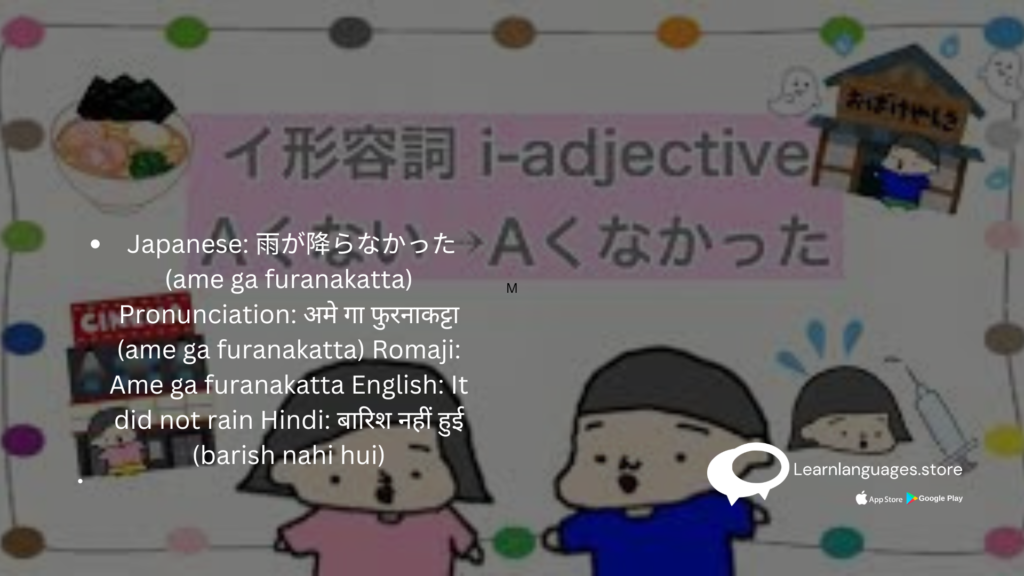Exploring the Lighter Side of Past Negative Form in Japanese Grammar
Exploring the Lighter Side of Past Negative Form in Japanese Grammar
Estimated reading time: 3 minutes

INTRODUCTION:-
Introduction: Welcome, language enthusiasts! Today, we’re diving into the whimsical world of past negative form in Japanese grammar. Prepare for laughter and learning as we unravel the intricacies of expressing the past in a negated manner.
Past Negative Form: 〜くなかった (kunakatta) In Japanese grammar,
the past negative form is formed by adding 〜くなかった (kunakatta) to the stem of an adjective or verb. This structure indicates that an action or state did not occur in the past.
Example 1:
Rainy Day Blues Japanese: 雨が降らなかった (ame ga furanakatta) Pronunciation: अमे गा फुरनाकट्टा (ame ga furanakatta) Romaji: Ame ga furanakatta English: It did not rain Hindi: बारिश नहीं हुई (barish nahi hui) Caption: Escaping the rain clouds – 雨が降らなかった (ame ga furanakatta)!
Exception Usage:
While most adjectives and verbs follow the pattern of adding 〜くなかった (kunakatta) for past negative tense, there are exceptions. For example, the adjective “いい” (ii), meaning “good,” becomes “よくなかった” (yokunakatta) for “was not good.”
Identifying in a Sentence:
Identifying past negative form in Japanese sentences is straightforward – look for 〜くなかった (kunakatta) attached to the stem of an adjective or verb. For example, in the sentence “彼は疲れなかった” (kare wa tsukarenakatta), “疲れなかった” (tsukarenakatta) indicates “did not get tired.”
Conclusion:
As we bid adieu to the world of past negative form in Japanese grammar, let’s carry forward the lessons learned with humor and enthusiasm. Language learning is a journey best enjoyed with a smile on our faces and a chuckle in our hearts!
-
Product on sale
 Japanese N4
Japanese N4₹18,300.00
₹24,300.00 -
Product on sale
 Japanese N5
Japanese N5₹16,300.00
₹18,300.00
Learn Languages Store
Vashi,
Email: services@learnlanguages.store










